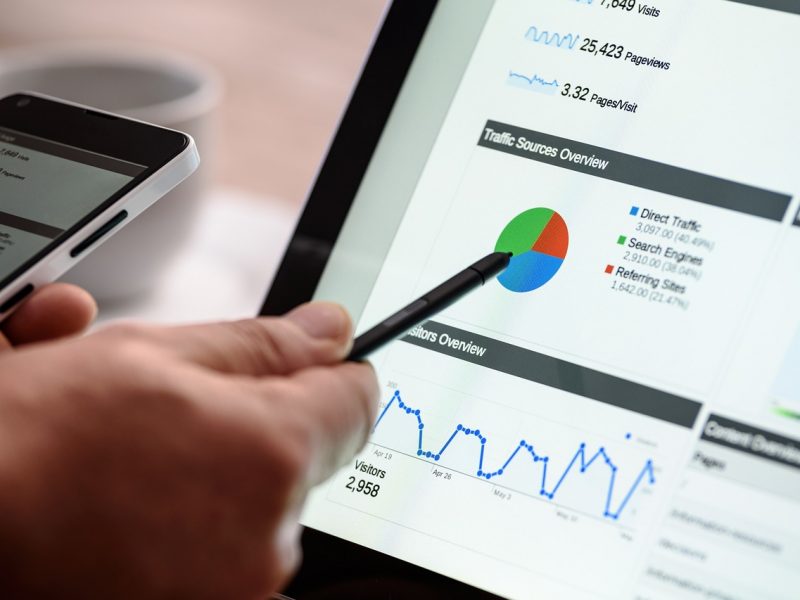In the fast-evolving world of digital marketing, businesses are constantly seeking effective ways to reach their target audiences and achieve their marketing goals. Among the myriad of digital advertising strategies available, Pay Per Click (PPC) advertising stands out as one of the most powerful and versatile tools at a marketer’s disposal. This blog post will provide a comprehensive overview of PPC ads, exploring what they are, how they work, their benefits, and best practices for implementing a successful PPC campaign.
Understanding Pay Per Click (PPC) Advertising
What is PPC?
Pay Per Click (PPC) is a form of online advertising where advertisers pay a fee each time one of their ads is clicked. Essentially, it’s a way of buying visits to your site, rather than attempting to “earn” those visits organically. PPC ads can appear on search engines, social media platforms, websites, and other digital spaces. The most popular form of PPC is search engine advertising, where advertisers bid for ad placement in a search engine’s sponsored links when someone searches on a keyword related to their business offering.
How Does PPC Work?
PPC works through an auction system that takes place every time someone performs a search. To get started with PPC, advertisers need to create ads and bid on specific keywords relevant to their business. These bids determine how much they are willing to pay for each click on their ad. When a user enters a search query that includes the keyword, the search engine determines which ads will be displayed based on the advertiser’s bid and the quality of the ad.
Key Components of PPC:
- Keywords: Keywords are the foundation of PPC advertising. They are the words and phrases that users type into search engines. Choosing the right keywords is crucial, as it directly impacts the visibility and relevance of the ads.
- Ad Auction: When a user performs a search, an ad auction is triggered. The search engine uses complex algorithms to determine which ads are displayed and in what order. The primary factors considered are the bid amount and the ad’s Quality Score.
- Quality Score: This is a metric used by search engines to measure the relevance and quality of an ad compared to the keyword being searched. It considers factors such as click-through rate (CTR), ad relevance, and the landing page experience. A higher Quality Score can lead to lower costs and better ad positions.
- Ad Rank: Ad Rank determines the position of your ad on the search results page. It is calculated by multiplying your bid by your Quality Score. Higher Ad Ranks mean better ad placements.
- Cost Per Click (CPC): This is the actual price you pay for each click on your ad. The CPC can vary based on competition, Quality Score, and other factors.
Popular PPC Platforms
Several platforms offer PPC advertising opportunities, each with its unique features and benefits:
- Google Ads: As the largest PPC platform, Google Ads allows businesses to display ads on Google search results, YouTube, and the Google Display Network. Google Ads provides robust targeting options and a vast audience reach.
- Bing Ads: While not as large as Google, Bing Ads still captures a significant share of the search market. It offers similar features to Google Ads and can be a cost-effective option due to less competition.
- Social Media Platforms: Facebook Ads, Instagram Ads, LinkedIn Ads, and Twitter Ads offer PPC advertising options that allow businesses to target users based on demographics, interests, and behaviours.
- Amazon Advertising: For e-commerce businesses, Amazon Advertising offers PPC options that allow sellers to promote their products directly on the Amazon platform.
Benefits of PPC Advertising
PPC advertising provides numerous benefits that can significantly enhance a business’s digital marketing efforts. Here are some of the key advantages:
1. Immediate Results
Unlike organic search strategies, which can take months to show results, PPC ads can generate traffic and leads almost immediately. Once a campaign is set up and live, ads start appearing, and potential customers can click through to your website right away.
2. Targeted Advertising
PPC allows for highly targeted advertising. Advertisers can specify who sees their ads based on various criteria, including location, device, time of day, language, and audience interests. This ensures that the ads reach the most relevant audience, increasing the chances of conversions.
3. Cost Control
PPC provides complete control over your advertising budget. Advertisers can set daily or monthly budgets, and they only pay when someone clicks on their ad. This ensures that the advertising spend is directly linked to performance, providing a clear ROI.
4. Measurable ROI
One of the significant advantages of PPC advertising is the ability to measure and analyse campaign performance in real-time. Metrics such as impressions, clicks, CTR, conversions, and cost per conversion provide valuable insights into the effectiveness of the ads. This data can be used to optimise campaigns for better results.
5. Brand Exposure
Even if users do not click on the ads, PPC can still provide significant brand exposure. Ads appear at the top of search results or on prominent positions on social media and other platforms, increasing brand visibility and recognition.
6. Flexibility and Customisation
PPC campaigns offer a high degree of flexibility and customisation. Advertisers can create different ad types, test various ad copies, and adjust their bids and budgets based on performance. This allows for continuous optimisation and improvement.
Statistics Highlighting the Importance of PPC
To understand the impact and effectiveness of PPC advertising, consider the following statistics from reputable sources:
- Google Ads: According to Google, businesses make an average of $2 in revenue for every $1 they spend on Google Ads, demonstrating the high ROI potential of PPC advertising .
- Search Engine Journal: PPC visitors are 50% more likely to purchase something than organic visitors .
- WordStream: The average conversion rate in Google Ads across all industries is 3.75% for search and 0.77% for display networks .
- Clutch: 45% of small businesses are using PPC advertising, and 78% of marketers agree that PPC is a huge driver for their business .
- HubSpot: The average CPC in Google Ads varies by industry, with the most expensive industries being legal ($6.75), consumer services ($6.40), and technology ($3.80) .
These statistics highlight the effectiveness of PPC advertising in driving traffic, conversions, and revenue for businesses across various industries.
Best Practices for a Successful PPC Campaign
While PPC offers numerous benefits, achieving success requires a strategic approach and careful management. Here are some best practices for running an effective PPC campaign:
1. Keyword Research
Effective keyword research is the foundation of a successful PPC campaign. Use tools like Google Keyword Planner, SEMrush, and Ahrefs to identify relevant keywords with a good balance of search volume and competition. Focus on long-tail keywords, which are more specific and less competitive, to capture highly targeted traffic.
2. Compelling Ad Copy
Creating compelling ad copy is crucial for attracting clicks. Your ads should be clear, concise, and highlight the unique selling points of your products or services. Include a strong call-to-action (CTA) that encourages users to take the desired action, such as “Buy Now,” “Learn More,” or “Get a Free Quote.”
3. Landing Page Optimisation
Your landing page plays a significant role in converting clicks into customers. Ensure that your landing pages are relevant to the ad, load quickly, and provide a seamless user experience. Use clear headlines, engaging visuals, and persuasive content to guide visitors towards conversion.
4. A/B Testing
A/B testing involves creating multiple versions of your ads and landing pages to determine which performs best. Test different headlines, ad copy, images, and CTAs to identify what resonates most with your audience. Continuously monitor the results and optimise your campaigns based on data-driven insights.
5. Bid Management
Effective bid management is essential for maximising your PPC budget. Use automated bidding strategies, such as target CPA (cost per acquisition) or ROAS (return on ad spend), to optimise your bids based on your campaign goals. Monitor your bids regularly and adjust them as needed to maintain competitive positioning.
6. Negative Keywords
Negative keywords are terms that you do not want your ads to show for. Adding negative keywords to your campaigns helps prevent your ads from appearing for irrelevant searches, reducing wasted spend and improving the quality of your traffic.
7. Ad Extensions
Ad extensions provide additional information about your business and can improve the visibility and performance of your ads. Use ad extensions like site links, callouts, structured snippets, and call extensions to provide more context and increase the likelihood of clicks.
8. Monitor and Analyse Performance
Regularly monitor your PPC campaigns to track key metrics such as CTR, conversion rate, and cost per conversion. Use tools like Google Analytics and the reporting features within your PPC platform to analyse performance and identify areas for improvement. Adjust your campaigns based on the data to achieve better results.
9. Focus on Quality Score
Improving your Quality Score can lead to lower costs and better ad positions. Focus on creating relevant ads, improving your landing page experience, and increasing your CTR to boost your Quality Score. A higher Quality Score can give you a competitive edge in the ad auction.
10. Stay Updated with Industry Trends
The digital marketing landscape is constantly evolving, and staying updated with the latest trends and best practices is crucial for success. Follow industry blogs, attend webinars, and participate in forums to stay informed about new developments and strategies in PPC advertising.
Conclusion
Pay Per Click (PPC) advertising is a powerful and versatile tool that can help businesses achieve their marketing goals by driving targeted traffic, increasing brand visibility, and generating leads and sales. By understanding the fundamentals of PPC, leveraging the benefits, and following best practices, businesses can create effective campaigns that deliver measurable results.
As the digital marketing landscape continues to evolve, PPC advertising will remain a crucial component of a successful marketing strategy. By staying informed about industry trends, continuously optimising campaigns, and focusing on delivering value to your audience, you can harness the full potential of PPC and drive your business forward.
Incorporating PPC into your digital marketing strategy can be a game-changer. It offers immediate results, precise targeting, cost control, and measurable ROI. By implementing the best practices outlined in this guide, you can create a successful PPC campaign that not only drives traffic and conversions but also contributes to your overall business growth.
For businesses looking to take their digital marketing efforts to the next level, partnering with a knowledgeable and experienced digital marketing agency can provide the expertise and resources needed to maximise the impact of PPC advertising. Whether you’re just starting with PPC or looking to optimise your existing campaigns, a strategic approach and continuous improvement will ensure long-term success in the competitive digital landscape.



